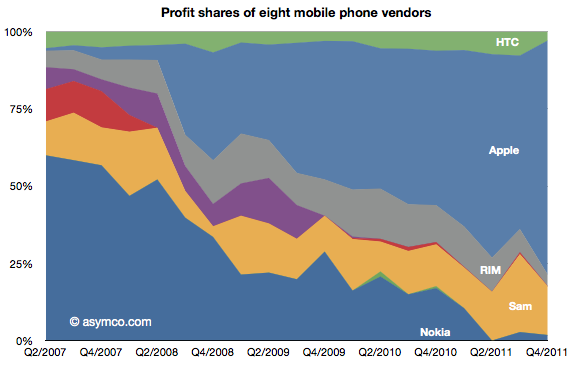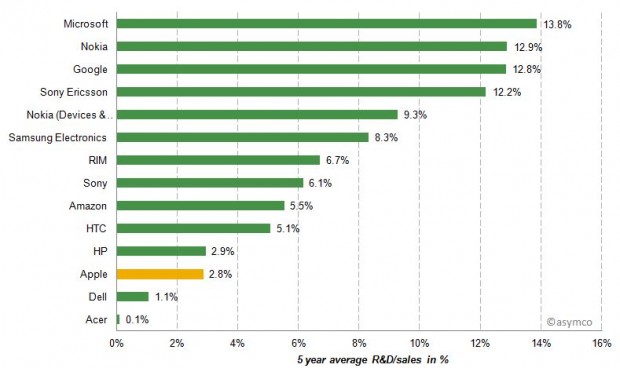From the excellent book of Nobel Price winner Daniel Kanehman Thinking, Fast and Slow, an excerpt on how we usually overestimate the role of CEOs and underestimate the role of luck in much of what happens in our lives. This excerpt is about CEOs and companies, but the book contains much more insights and observations about us that come from the work of Kanehman. This book is a must read.
Excerpt:
Researchers measure the strength of relationships by a correlation coefficient, which varies between 0 and 1. The coefficient was defined earlier (in relation to regression to the mean) by the extent to which two measures are determined by shared factors. A very generous estimate of the correlation between the success of the firm and the quality of its CEO might be as high as .30, indicating 30% overlap. To appreciate the significance of this number, consider the following question:
Suppose you consider many pairs of firms. The two firms in each pair are generally similar, but the CEO of one of them is better than the other. How often will you find that the firm with the stronger CEO is the more successful of the two?
In a well-ordered and predictable world, the correlation would be perfect (1), and the stronger CEO would be found to lead the more successful firm in 100% of the pairs. If the relative success of similar firms was determined entirely by factors that the CEO does not control (call them luck, if you wish), you would find the more successful firm led by the weaker CEO 50% of the time. A correlation of .30 implies that you would find the stronger CEO leading the stronger firm in about 60% of the pairs—an improvement of a mere 10 percentage points over random guessing, hardly grist for the hero worship of CEOs we so often witness.
If you expected this value to be higher—and most of us do—then you should take that as an indication that you are prone to overestimate the predictability of the world you live in. Make no mistake: improving the odds of success from 1:1 to 3:2 is a very significant advantage, both at the racetrack and in business. From the perspective of most business writers, however, a CEO who has so little control over performance would not be particularly impressive even if her firm did well. It is difficult to imagine people lining up at airport bookstores to buy a book that enthusiastically describes the practices of business leaders who, on average, do somewhat better than chance. Consumers have a hunger for a clear message about the determinants of success and failure in business, and they need stories that offer a sense of understanding, however illusory.
In his penetrating book The Halo Effect, Philip Rosenzweig, a business school professor based in Switzerland, shows how the demand for illusory certainty is met in two popular genres of business writing: histories of the rise (usually) and fall (occasionally) of particular individuals and companies, and analyses of differences between successful and less successful firms. He concludes that stories of success and failure consistently exaggerate the impact of leadership style and management practices on firm outcomes, and thus their message is rarely useful.
To appreciate what is going on, imagine that business experts, such as other CEOs, are asked to comment on the reputation of the chief executive of a company. They poрare keenly aware of whether the company has recently been thriving or failing. As we saw earlier in the case of Google, this knowledge generates a halo. The CEO of a successful company is likely to be called flexible, methodical, and decisive. Imagine that a year has passed and things have gone sour. The same executive is now described as confused, rigid, and authoritarian. Both descriptions sound right at the time: it seems almost absurd to call a successful leader rigid and confused, or a struggling leader flexible and methodical.
Indeed, the halo effect is so powerful that you probably find yourself resisting the idea that the same person and the same behaviors appear methodical when things are going well and rigid when things are going poorly. Because of the halo effect, we get the causal relationship backward: we are prone to believe that the firm fails because its CEO is rigid, when the truth is that the CEO appears to be rigid because the firm is failing. This is how illusions of understanding are born.
The halo effect and outcome bias combine to explain the extraordinary appeal of books that seek to draw operational morals from systematic examination of successful businesses. One of the best-known examples of this genre is Jim Collins and Jerry I. Porras’s Built to Last. The book contains a thorough analysis of eighteen pairs of competing companies, in which one was more successful than the other. The data for these comparisons are ratings of various aspects of corporate culture, strategy, and management practices. “We believe every CEO, manager, and entrepreneur in the world should read this book,” the authors proclaim. “You can build a visionary company.”
The basic message of Built to Last and other similar books is that good managerial practices can be identified and that good practices will be rewarded by good results. Both messages are overstated. The comparison of firms that have been more or less successful is to a significant extent a comparison between firms that have been more or less lucky. Knowing the importance of luck, you should be particularly suspicious when highly consistent patterns emerge from the comparison of successful and less successful firms. In the presence of randomness, regular patterns can only be mirages.
Because luck plays a large role, the quality of leadership and management practices cannot be inferred reliably from observations of success. And even if you had perfect foreknowledge that a CEO has brilliant vision and extraordinary competence, you still would be unable to predict how the company will perform with much better accuracy than the flip of a coin. On average, the gap in corporate profitability and stock returns between the outstanding firms and the less successful firms studied in Built to Last shrank to almost nothing in the period following the study. The average profitability of the companies identified in the famous In Search of Excellence dropped sharply as well within a short time. A study of Fortune’s “Most Admired Companies” finds that over a twenty-year period, the firms with the worst ratings went on to earn much higher stock returns than the most admired firms.
You are probably tempted to think of causal explanations for these observations: perhaps the successful firms became complacent, the less successful firms tried harder. But this is the wrong way to think about what happened. The average gap must shrink, because the original gap was due in good part to luck, which contributed both to the success of the top firms and to the lagging performance of the rest. We have already encountered this statistical fact of life: regression to the mean.
Stories of how businesses rise and fall strike a chord with readers by offering what the human mind needs: a simple message of triumph and failure that identifies clear causes and ignores the determinative power of luck and the inevitability of regression. These stories induce and maintain an illusion of understanding, imparting lessons of little enduring value to readers who are all too eager to believe them.




